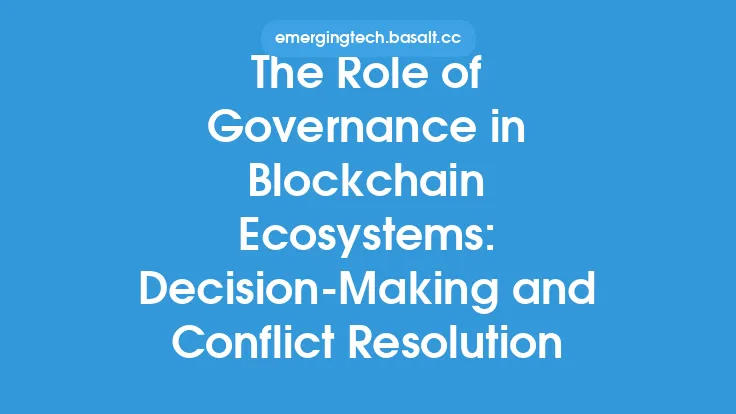The insurance industry has traditionally been slow to adopt new technologies, but the rise of insurtech has changed the game. Insurtech, a combination of insurance and technology, refers to the use of technology to improve the efficiency, speed, and accuracy of insurance services. One of the key areas where insurtech is making a significant impact is in data-driven decision making. Insurers are now using advanced data analytics and machine learning algorithms to make more informed decisions about risk assessment, policy pricing, and claims processing.
Introduction to Data-Driven Decision Making
Data-driven decision making is a process that involves using data and analytics to inform business decisions. In the insurance industry, this means using data to better understand risk, price policies more accurately, and process claims more efficiently. Insurers are now using a wide range of data sources, including social media, sensors, and wearables, to gather information about their customers and the risks they face. This data is then analyzed using advanced algorithms and machine learning techniques to identify patterns and trends that can inform business decisions.
The Role of Advanced Analytics in Insurtech
Advanced analytics plays a critical role in insurtech, enabling insurers to extract insights from large datasets and make more informed decisions. Advanced analytics involves the use of techniques such as predictive modeling, data mining, and machine learning to analyze complex data sets. In the insurance industry, advanced analytics is being used to improve risk assessment, policy pricing, and claims processing. For example, insurers are using predictive modeling to identify high-risk customers and offer them personalized policy options. They are also using data mining to identify patterns in claims data and improve the efficiency of the claims processing system.
Data Sources for Insurtech
Insurtech relies on a wide range of data sources, including social media, sensors, and wearables. Social media data, for example, can be used to gather information about a customer's lifestyle and risk profile. Sensors and wearables, on the other hand, can provide real-time data about a customer's health and wellness. Insurers are also using data from other sources, such as vehicle telematics and smart home devices, to gather information about their customers and the risks they face. This data is then analyzed using advanced analytics and machine learning algorithms to identify patterns and trends that can inform business decisions.
Machine Learning in Insurtech
Machine learning is a key technology in insurtech, enabling insurers to analyze large datasets and make more informed decisions. Machine learning involves the use of algorithms that can learn from data and improve their performance over time. In the insurance industry, machine learning is being used to improve risk assessment, policy pricing, and claims processing. For example, insurers are using machine learning algorithms to analyze data from social media and other sources to identify high-risk customers and offer them personalized policy options. They are also using machine learning to analyze claims data and identify patterns that can inform the claims processing system.
The Benefits of Data-Driven Decision Making in Insurtech
The benefits of data-driven decision making in insurtech are numerous. For one, it enables insurers to make more informed decisions about risk assessment, policy pricing, and claims processing. This can lead to more accurate policy pricing, faster claims processing, and improved customer satisfaction. Data-driven decision making can also help insurers to identify new business opportunities and improve their competitiveness in the market. Additionally, it can help insurers to reduce their costs and improve their efficiency, which can lead to increased profitability and growth.
Challenges and Limitations of Data-Driven Decision Making in Insurtech
Despite the benefits of data-driven decision making in insurtech, there are also several challenges and limitations. For one, insurers need to have access to high-quality data and advanced analytics capabilities to make informed decisions. They also need to have the right skills and expertise to analyze and interpret the data. Additionally, there are concerns about data privacy and security, as well as the potential for bias in machine learning algorithms. Insurers also need to be aware of the regulatory requirements and compliance issues related to data-driven decision making.
Best Practices for Implementing Data-Driven Decision Making in Insurtech
To implement data-driven decision making in insurtech, insurers need to follow several best practices. For one, they need to have a clear strategy and roadmap for data-driven decision making. They also need to have the right skills and expertise, as well as access to high-quality data and advanced analytics capabilities. Insurers should also prioritize data privacy and security, as well as transparency and explainability in their machine learning algorithms. Additionally, they should be aware of the regulatory requirements and compliance issues related to data-driven decision making.
Conclusion
In conclusion, data-driven decision making is a key aspect of insurtech, enabling insurers to make more informed decisions about risk assessment, policy pricing, and claims processing. The use of advanced analytics and machine learning algorithms is critical to this process, as it enables insurers to extract insights from large datasets and make more accurate predictions. While there are several challenges and limitations to data-driven decision making in insurtech, the benefits are numerous and can lead to increased competitiveness, profitability, and growth. By following best practices and prioritizing data privacy and security, insurers can unlock the full potential of data-driven decision making in insurtech.





